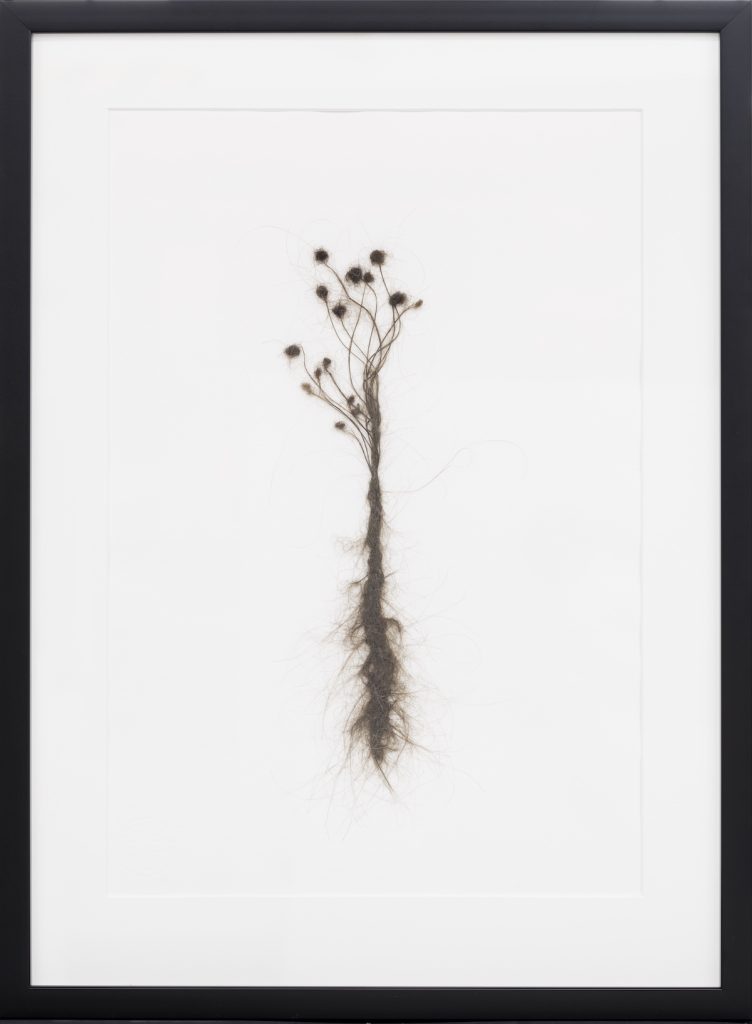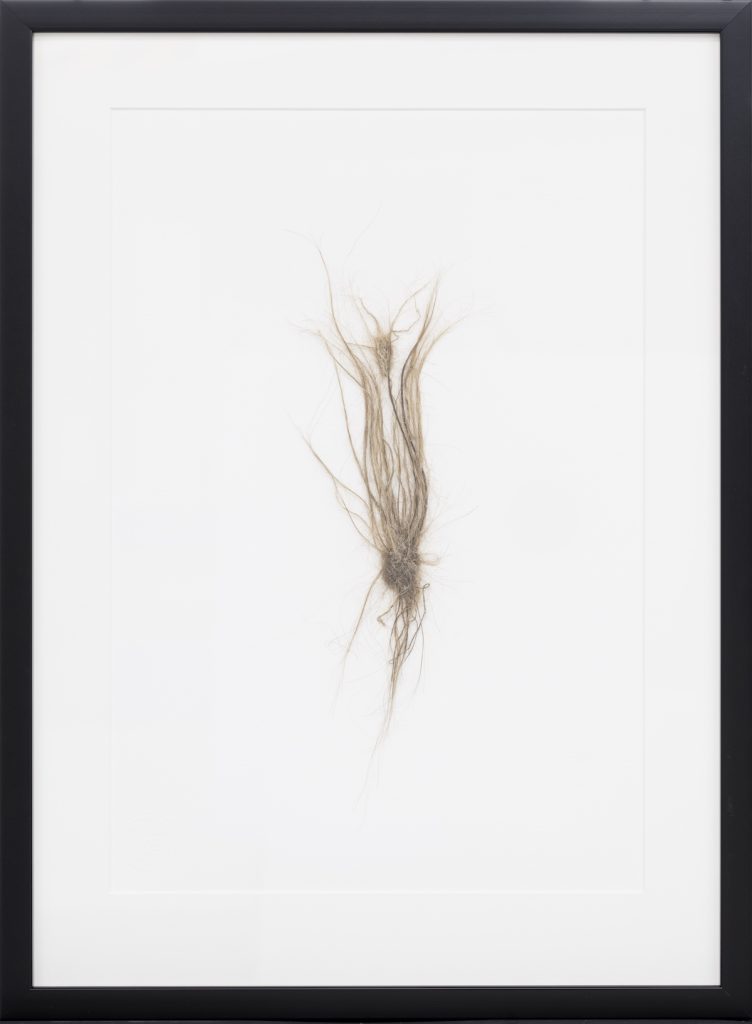Noora Schroderus, Hairy Herbarium
MARCH 2023
“Art made from pubic and underarm hair – controversial exhibition at Serlachius Museum,” headlined the tabloid Iltalehti on May 15, 2016. The headline-making exhibition was Feminine Sensibility featuring sculptor Noora Schroderus, who had graduated from the Fine Arts Academy two years earlier. The media controversy revolved around the debut of her Hairy Herbarium.
Schroderus is an artist who thumbs her nose at norms and prejudices. Insatiable curiosity and inventiveness characterise her work, which is themed around gender and power, wicked self-irony, and our relationships with our bodies.
Six of the 22 specimens in Hairy Herbarium were acquired for the Serlachius contemporary art collection after the exhibition. Each piece looks deceptively like an authentic dried plant from a real herbarium. The collection also harks back to the days when Finnish schoolchildren spent the summer collecting, pressing and drying plants for their school herbarium projects.
The organic forms of the plants are pleasing to the eye from afar, but closer inspection might bring on a shudder – the ‘plants’ turn out to stitched from human body hair. Various types of body hair were donated to Schroderus by friends and hair salons. By twisting it between her fingers, she fashioned it into thread and used it for embroidering her plant specimens.
The artist has described how awkward or outright unbearable it felt for some volunteers to collect their own body hair. Schroderus herself instinctively cringed upon opening the first envelope. She then decided there is nothing revolting about clean body hair, and now enjoys a neutral relationship with her material.
Hairy Herbarium invites us to contemplate why women are expected to live up to a hairless ideal. Body hair is conspicuous by its absence in art history’s classic repertoire of female nudes. Hair is desirable only in certain locations, and external norms dictate which sites of the body should ideally be hairless. Despite the occasional rebels who choose to go ‘all natural’, women with hairy legs and armpits remain a public anomaly. When did the natural become unnatural? Schroderus seems to ask: What if we saw things the other way around?
Schroderus boldly experiments with various techniques, as evidenced by the wide array of her works found in the Gösta Serlachius Fine Arts Foundation Collection. Her materials include embroidery on international banknotes, photographs, plaster, and boxing gloves made of tapestry fabric. After Hairy Herbarium, Schroderus continued embroidering, not with human hair but dog fur, which her friends provided willingly. Collecting material for her Canis Lupus Familiaris series was far easier than for the herbarium project – our relationship with pet fur is apparently saddled with less baggage.
Laura Kuurne
Laura Kuurne
Head of Collections and Exhibitions
The text has been published in the book Six Glimpses into a Collection – Works from contemporary art collection of Gösta Serlachius Fine Arts Foundation.



